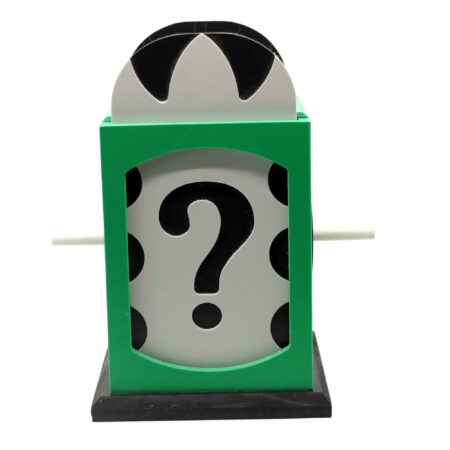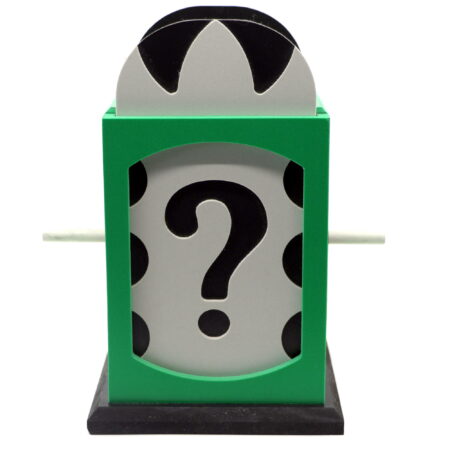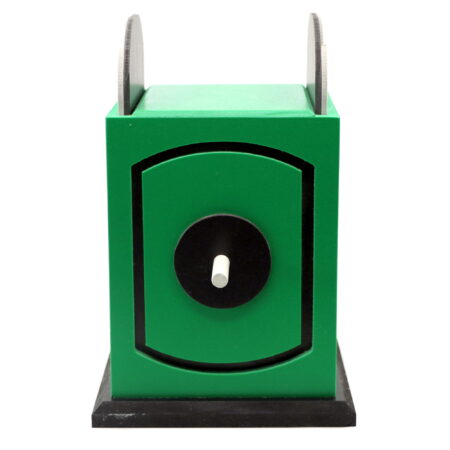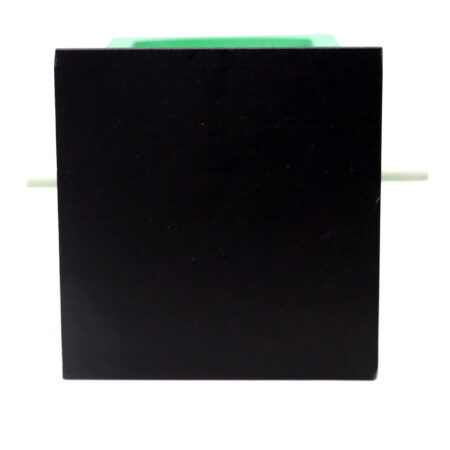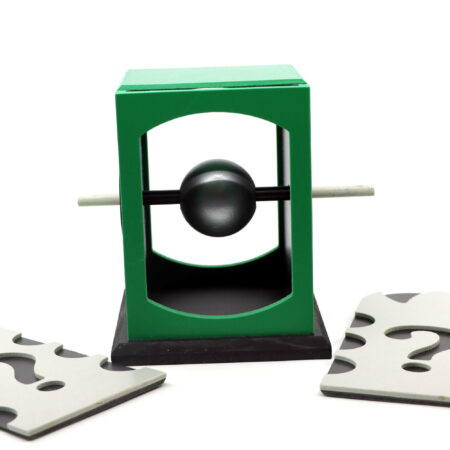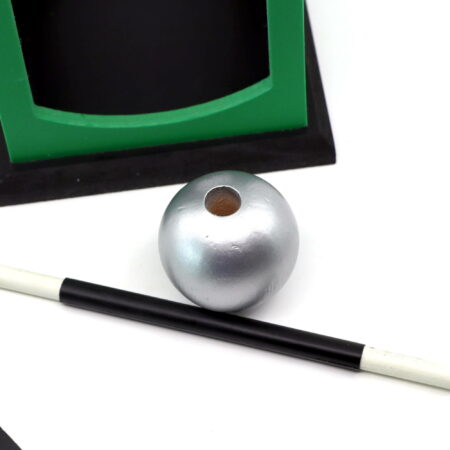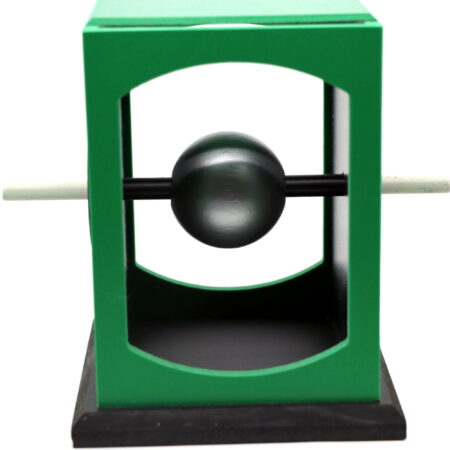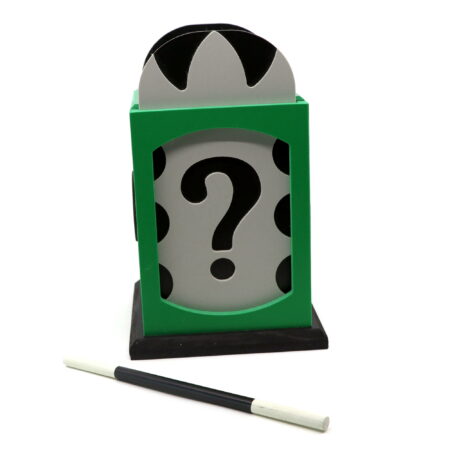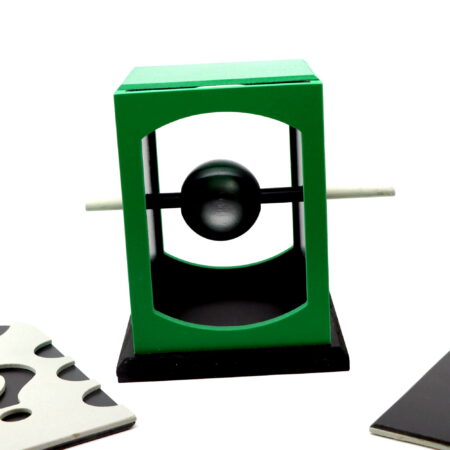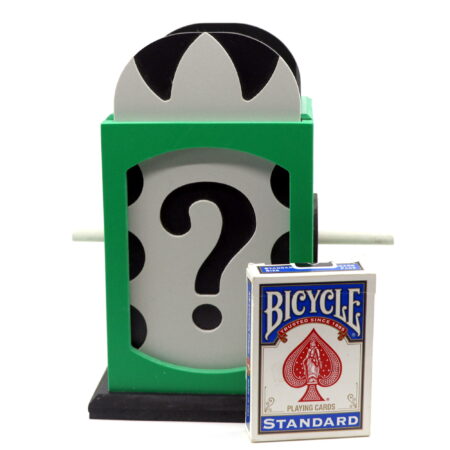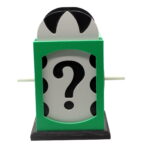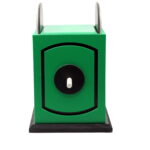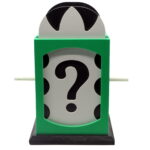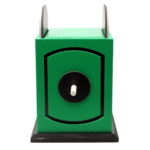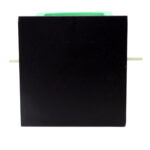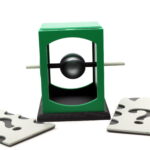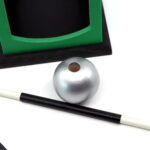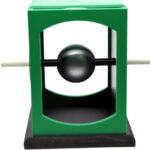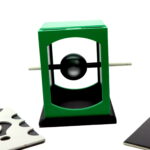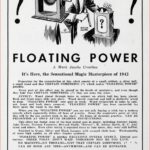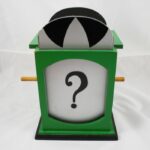Description
Floating Power was invented by Mark Jacobs and built by John Snyder c. 1942. This version was built by Jay Leslie.
This is a solid CNC machined multi-layered plastic version and looks good. It does not look as good as the wooden version created by Limited Edition Magicbut it still works well and is a fooler for sure. If you look at the final photo you’ll see how close this version looks to the original in terms of color scheme.
Effect: Neat looking mitered joinery is used throughout. While this box is under 7 inches tall (160 mm) You can stand on it, something you would never do with wood. The ball is solid Maple, painted in bright silver enamel. The doors are layer on layer with the Question Mark graphic jumping out at you. Anyone who performs further then 5 feet from the audience will appreciate how the graphics appear great both close up and from a distance.
A box with two removable doors is displayed along with a 2 inch (48mm) silver ball and magic wand. The rear door is shut. The wand is threaded through the box with the silver ball centered. The front door is shut. The wand is removed and displayed. When the wand is removed, the audience hears the ball drop to the bottom of the box. The wand is reinserted.
The front door is opened & the silver ball is seen resting on the center of the wand again. The rear door may be removed as the picture shows. Floating Power Can be examined after the performance. Both doors, the wand & the box can be examined without any trace of how it works. There are no hidden devices built into the box.
- No threads or wires
- No magnets
- No finger holes in the bottom of the box
- You don’t pick the box up
- No assistants
- No hidden parts, the audience sees every aspect of the performance
- The box is never covered at any time. You may pass out the wand, doors & the box, if you want, and no one will be the wiser.
(Notice: Includes: Printed Instructions.)
( Post Source: martinsmagic.com - click for details )
